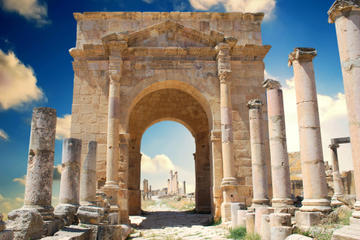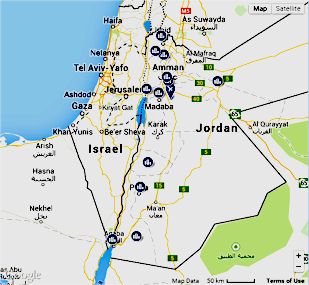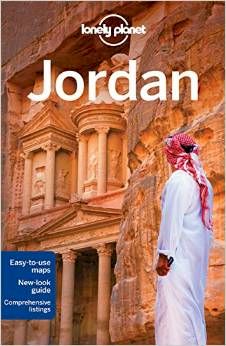« HOME • JORDAN • Discover Jordan
Discover Magical Jordan
During its history, Jordan has seen numerous civilizations, including such ancient near eastern ones as the Canaanite and later other Semitic peoples such as the Edomites, and the Moabites. Other civilizations possessing political sovereignty and influence in Jordan were: Akkadian, Assyrian, Israelite/Judean, Babylonian, and Persian empires.
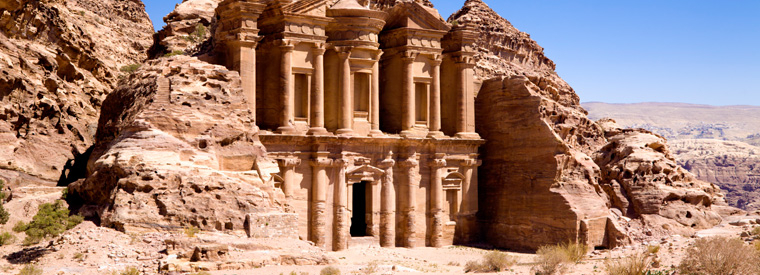
Popular Destinations: Amman • Petra • … and more |
• Amman
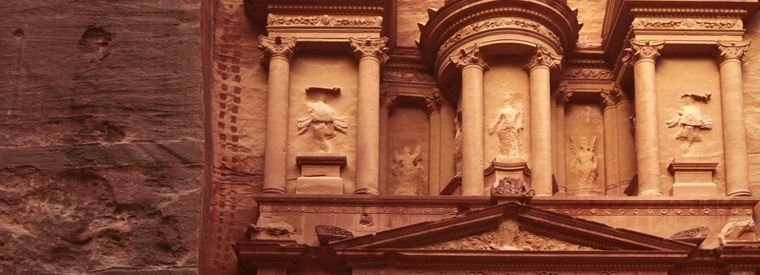
Amman is the capital and largest city of the Hashemite Kingdom of Jordan. A city of about 2 million inhabitants, it is the country's political, cultural and commercial centre and one of the oldest continuously inhabited cities in the world. Amman has been inhabited by several civilizations …
• Petra
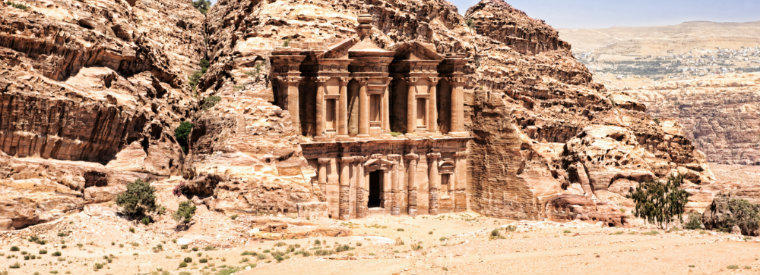
Petra, originally known to the Nabataeans as Raqmu, is a historical and archaeological city in southern Jordan. The city is famous for its rock-cut architecture and water conduit system. Another name for Petra is the Rose City due to the color of the stone out of which it is carved …
A | B | C | D | E | F | G | H | I | J | K | L | M | N | O | P | Q | R | S | T | U | V | W | X | Y | Z
» Ajloun Castle
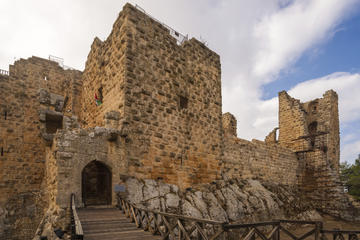
Built atop the ruins of a monastery between 1184 and 1188, Ajloun Castle (Qala'At Ar-Rabad in Arabic) sits on Jabal Auf hill overlooking the countryside in the north of Jordan. Arab general Azz ad-Din Usama, Saladin's nephew, oversaw its construction in part to protect the region from Crusader expansion and to safeguard iron mines in the nearby hills. The fort was enlarged in 1214 but largely destroyed by Mongols in 1260. It was rebuilt almost immediately, and while earthquakes have twice caused significant damage, ongoing restorations have kept the castle in much the same condition as it stood in the 13th century …
» Aqaba

As Jordan's only coastal city and a busy seaport, Aqaba makes a popular stop for cruise ships and a scenic base for exploring Petra and Wadi Rum, encircled by desert mountains and fronting the glistening Red Sea. Recent developments have seen a string of luxury resorts spring up along Aqaba's coastline, along with the manmade lagoons of the Ayla Oasis Project, which also boasts a marina, golf course and shopping complex, but the town's main draw is still its natural assets …
» Azraq Wetland Reserve
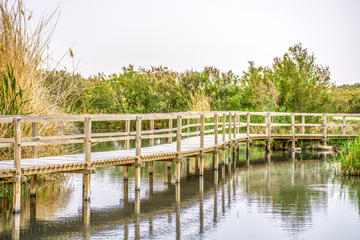
A tranquil oasis hidden between the vast sands and sandstone cliffs of Jordan's deserts, the Azraq Wetland Reserve offers a welcome change of scenery, and it's an easy day trip from nearby Amman. The expanse of lush wetlands, glittering blue pools and seasonally flooded marshland is undeniably scenic, but the main attractions for visitors are the wildlife spotting opportunities. Around 150 species of migratory birds pass through the reserve, while native species include water buffalo and the rare Azraq Killifish …
» Jerash
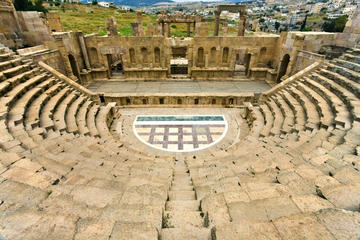
In ancient times, the Roman town of Gerasa grew rich from iron ore as well as agricultural products which flourished in this comparatively lush temperate region. This wealth in turn endowed the town with architectural treasures: the unique oval Forum, Hippodrome, Amphitheater, Agora, and the proud columns of the Temple to Artemis. The majestic Hadrian's Arch dates from the eponymous Roman Emperor's visit, an event which signaled the town's importance …
» Mount Nebo
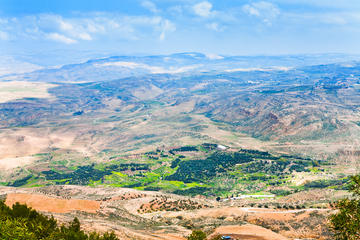
Mount Nebo is 817 meters (2,680 feet) above sea level, and thus more than 1km (0.6 mi) above the neighboring Dead Sea. It is a site holy to both Christians and Jews: Moses is said to have died on or near the mountain some time after God had showed him the Holy Land from its summit. You can still enjoy the prophet's view today - gaze out over the sea lying under a saline haze, the ancient city of Jericho and, if you're lucky, all the way to Jerusalem and Bethlehem …
» Pella
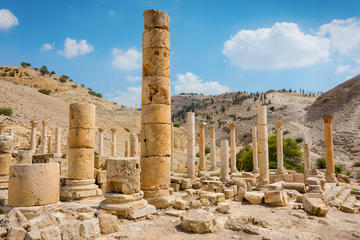
The ancient city of Pella, one of Jordan's most underrated attractions, is also one of the country's most important archeological sites. Humans have been living in and around Pella continuously for more than 6,000 years. Among the ruins in the area are the remnants of a Greco-Roman theater, a Chalcolithic settlement dating back to the fourth millennium BC, Byzantine churches, Bronze and Iron age walled cities and early Islamic residential neighborhoods. Excavations in Pella have been ongoing since 1979 …
» Petra
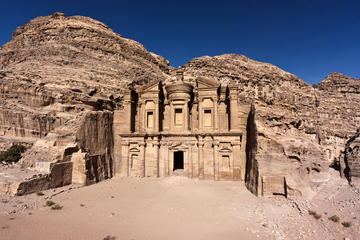
Petra: highlight not just of Jordan but of the entire Middle East; sublime and mysterious city; incomparable jewel of ancient architecture. Petra was once an important stop on a Roman trading route, but was only assimilated into the empire in 106 AD. Until then it had been a stronghold of the Nabataen Arab kingdom, whose knowledge of Greek architectural styles is reflected in their astonishing cliff-bound monuments. Today Petra is a UNESCO- World Heritage site …
» Qasr Azraq
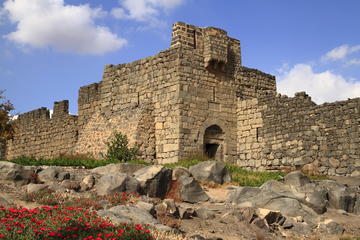
Located about an hour east of Amman, Qasr Azraq is a desert fortress created by the Romans back in 300 AD, although the structure in its current form was built in 1237 by the Mamelukes. The exact location of Qasr Azraq (meaning Blue Fortress) in the center of the Azraq Oasis was chosen strategically; this area is the only water source for over 7,000 miles. One of the fortress' striking features is its color - the local basalt gives it an atypical black hue, which is where it's believed the fortress gets its name …
» Qasr Kharana
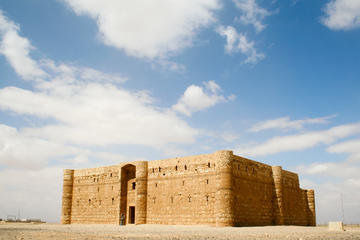
A true 'desert castle' near the Saudi Arabian border, Jordan's Qasr Kharana sits two storeys tall over the desert plain. Built in the early Umayyad period 13,000 years ago, the purpose of the 60-room monolith is unclear - its design shows that it was never a fort, and it's not on a trade route so it's unlikely to have been a caravanserai either. It's most likely that Qasr Kharana was a meeting space for Damascus elite and local Bedouin tribes. Whatever it was, the thick-walled limestone building remains imposing even today …
» Qusayr Amra
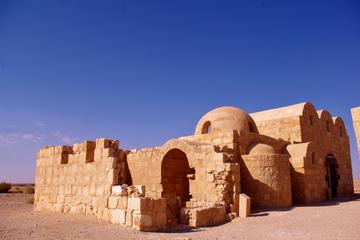
Qasr Amra earned itself UNESCO World Heritage site status in 1985 because of its famous frescoes, and it's one of Jordan's most renowned desert castles. Built near a wadi of pistachio trees during the reign of Walid I in around AD 711, restorations by a group of Spanish archaeologists in the 1970s unveiled floor-to-ceiling frescoes that caused the powers that be at UNESCO to describe the castle as a 'masterpiece of human creative genius.' Built from limestone and basalt, from the outside Qasr Amra doesn't look particularly special …
» Shobak Castle
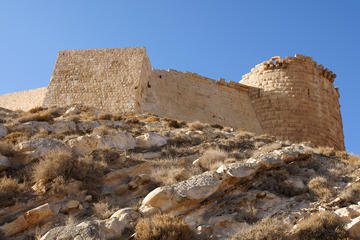
This ruins of this Crusader castle, formerly known as Mons Realis (Royal Mountain), date back to AD 1115 when they were built by Baldwin I of Jerusalem as a way to control the caravan and pilgrimage routes between Syria and the Arabian Peninsula. Today much of the original fortifications lie in ruins. Calligraphic inscriptions on the exterior of the remaining walls date back to the thirteenth century, and within the castle, visitors will find remains of a small chapel, the original gatehouse and several Ottoman cottages …
» Umm Qais Museum
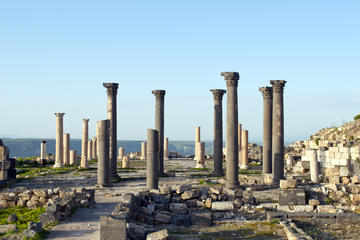
Located about 2.5 hours from Jordan's capital of Amman, the Umm Qais Museum is home to a mix of history and natural beauty that shouldn't be missed. The site's most popular draw would be the ruins of Gadara, an ancient Greco-Roman city occupied since the seventh century BC and originally ruled by the Ptolemaic Kingdom. According to the Bible, it was in this very place that Jesus removed demons from within two possessed men and put the evil spirits into a herd of pigs, who then sprinted into Lake Tiberias …
» Wadi Rum
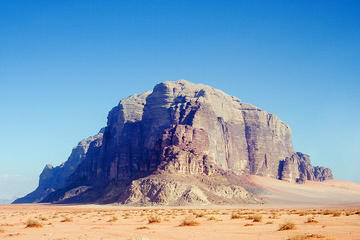
Shuttling between archaeological sites, an inevitable component of any Jordan trip, may have you longing for those haunting, limitless expanses of desert you've glimpsed from car windows. If so, head south for Wadi Rum, which offers spectacular vistas of towering cliffs and bold rock formations etched by erosion into other-worldly forms. Lawrence of Arabia was a well-known visitor to the Wadi Rum, and there are a number of sites here associated with him through tradition or historical proof …



